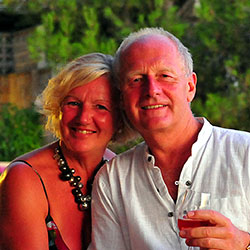In this our fourth and last part of our tour around Honshu, we investigate the capital and its environs – a kaleidoscope of smoke and mirrors.
We’ve encircled Honshu, the main island, in our tour of Japan. As you’ll see from the map below we’ve finally returned to Tokyo to investigate the city itself and some of the more notable locations that surround it – from views of iconic Mount Fuji, to boiling hot spring landscapes, big buddhas and crazy crossings.

Our journey starts in Osaka, boarding the Shinkansen ‘Bullet’ train once again.
Whilst we’ve always assumed that these trains have been updated over the years, we hadn’t realised that there are currently fifteen different types of train in current operation, dedicated to several routes.
Our own train is a E7/W7 series and will get us from Shin-Osaka to Tokyo in about 2hrs 30mins.
Before boarding we make sure to buy a couple of ‘Bento Box’ meals from the station kiosks. These are cheap, delicious and convenient ways to feed yourself en route as trains don’t have catering facilites.
After arrival and check-in at our hotel, one of the first things we decide to do is – get on another train!
This time, however we find our way to Ikebukuro Station, where after a bit of fiddling around and help from some friendly locals, we buy our local tickets to Shibuya Station, where we intend to take a lift in the gathering dusk to one of the viewing platforms way above the Shibuya ‘Scramble’ Crossing.

For payment of a small fee we get a complimentary drink and a bird’s eye view of the famous crossing where six or more junctions are held on red lights whilst hundreds of people scramble to cross the intersection before the lights go green.
Locals and tourists alike, seemingly take great delight in criss-crossing and weaving their way across the junction from all directions, paying little regard to the striped pedestrian lines on the road.
Given that the Tokyo population now approaches 40 million, its not difficult to see why the city hums with energy. What’s more surprising is that Japan is one of the least culturally diverse countries in the world, which probably accounts for the mono-focus of all that happens here – be it religion or diet.
Meals anywhere in Japan are easy to select (if you’re fairly open to experiment) as generally they’ll be replicated in plastic, wax or resin ‘shokuhin sampuru’ and displayed outsde each restaurant so that you can see what you’ll get – even if you don’t always know what it is!
The restaurant we choose is in the Ikebukuro complex and features the unusal option of sitting cross-legged on raised sofas to eat your meal. We opt for conventional seating to avoid wearing our meal, as we’re quite tired from travelling.

Afterwards we retire to our hotel and just soak up the view from our window before bed.
The next day we pay a visit to Senso-ji Temple – not because we haven’t seen enough temples and shrines already but because of its significance in Japan.
Senso-ji, also called Asakusa Kannon (because it houses the Buddhist deity Kannon) is the oldest temple in Tokyo and known throughout Japan. The temple draws 30 million visitors every year but fortunately they haven’t all turned up today – although it feels like it!
The temple includes many halls, as well as a main ‘shopping’ thoroughfare of religious artefacts, sweets and other delicacies to tempt worshippers. Its a melting pot of sights and sounds and a visit is well worthwhile.

By contrast, we briefly pass through the Ginza district of Tokyo. Ginza is packed with upmarket boutiques and plush cocktail and sushi bars. The main drag of Chuo Dori features every hedonists desire for high-end products.
Kamakura
Our first visit outside the city is to Kamakura, some ninety minutes by car or one hour by train away from Tokyo. Its only on seeing the signs for Kawasaki and Yokohama that we realise the link between these towns and their manufacturing namesakes.
There are a couple of places to visit here, the first being Kotoku-in Temple. The temple of Kotoku-in is renowned for The Great Buddha of Kamakura, a monumental outdoor bronze statue of Amitābha and one of the most famous icons of Japan.
The bronze buddha is over 13 metres (43ft) high and weighs over 100 tons.
 It sits in the open as a result of three successive wooden covered halls and a wooden buddha being blown away in storms over the centuries, culminating in the last being destroyed in a tsunami. This version has been sitting in splendid isolation for over six hundred years and although it has lost its original guilding, still resides on the site with only minor restoration works from time to time.
It sits in the open as a result of three successive wooden covered halls and a wooden buddha being blown away in storms over the centuries, culminating in the last being destroyed in a tsunami. This version has been sitting in splendid isolation for over six hundred years and although it has lost its original guilding, still resides on the site with only minor restoration works from time to time.

Our next stop is to the lovely Kamakura Hasedera temple. Hase-dera, or Hase-kannon is a Buddhist temple famous for housing a massive wooden statue of Kannon. Although this is impressive in itself, being made from guilded camphor wood, we’re more taken by the building that houses it and the pretty gardens with its little shrines that cover the surrounding wooded hillside and overlook a sweeping bay.
Hasedera is also notable for its small shrines dedicated to the memory and care of children, with hundreds of ‘Jizu’ statues standing in seried ranks. The statues represent the souls of miscarried, stillborn or aborted children and more than 50,000 Jizo statues have been offered here by parents since WW2, but the thousand or so currently displayed stay for only a year before being buried to make way for others.
Our ‘rule of thumb’ guide to ‘shrine’ or ‘temple’ – Shinto shrines having Torii gates at the entrance, whereas Buddhist temples have pagoda and buddha in evidence, is confused somewhat in Hasedera where it features both. We’re told that all Japanese are born into the Shinto faith but nearly ninety percent adopt Buddhism as well, or instead of.
Whilst here, we briefly visit Hakone Shrine on the shores of Lake Ashi, notable for its Torii gate on the shoreline and smaller vibrantly coloured smaller shrines but also the swathes of pieces of paper – Omikuji – that many visitors draw and tie to fences throughout Japan to make wishes for their future.
Our final visit is to Hakone, about one hour’s drive from Kamakura. Hakone, in Fuji-Hakone-Izu National Park is a mountainous town set alongside Lake Ashi in picturesque surroundings and is known for its hot springs resorts (onsen) and views of the iconic volcano Mount Fuji. Its a beautiful wooded park with rolling hills and is the first really totally natural rural area that we’ve encountered.
We take the cable car up Mount Hakone in order to get the best view of Fuji and although the mountain is partially swathed in cloud, it does provide a dramatic contrast with the volcanic landscape on which we stand that breathes steam from the hot spring workings on the mountain side.

All-in-all its a fitting last view and graphic representation of this incredibly culturally homogenous but geographically diverse country.
We’ve only touched upon Honshu, the main island, so there’s still plenty to see in the wilds of Hokkaido, Shikoku, and Kyushu before even considering the other three thousand!

If you’d like to check out Japan for yourself why not ask us to arrange your own tailor-made travel – to immerse yourself in the wonders of this world?

 Let us plan your own inspiring journey to exotic climes
Let us plan your own inspiring journey to exotic climes
Why not download the TLC World guide brochure or give us a call today on 01202 030443, or simply click ‘enquire’ to submit your own personal itinerary request





























